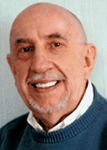- General Dermatology
- Eczema
- Chronic Hand Eczema
- Alopecia
- Aesthetics
- Vitiligo
- COVID-19
- Actinic Keratosis
- Precision Medicine and Biologics
- Rare Disease
- Wound Care
- Rosacea
- Psoriasis
- Psoriatic Arthritis
- Atopic Dermatitis
- Melasma
- NP and PA
- Skin Cancer
- Hidradenitis Suppurativa
- Drug Watch
- Pigmentary Disorders
- Acne
- Pediatric Dermatology
- Practice Management
- Prurigo Nodularis
Article
Lay the groundwork for a financially stable retirement
I'm not a big fan of New Year's resolutions. Before the first month of the new year rolls to a close, most will already be little more than hazy memories. Still, the beginning of a new year is a good time to reflect on the year just past, and take stock of your personal financial goals for the future — where you're heading, how you'll get there.

As far as your practice is concerned, there's a good chance that 2005 was a good year for you. Despite the calamitous effects of Hurricane Katrina and the continuing turmoil in the Middle East, the national economy managed to eke out a respectable overall gain. However, the year also established an inglorious milestone when the U.S. personal savings rate, expressed as a percentage of disposable income, dropped to zero percent last June.
Since many Americans are saving something out of their income, an average savings rate of zero percent means that a lot of us are spending more than we make. For a number of complex reasons, that's not good for the country as a whole, say most economists. Unarguably, it also isn't good for the individuals who are slowly lowering themselves into a financial abyss.
So, how are you doing? Are you taking enough time from your professional life to map out a sensible retirement plan? Are you socking away enough of your disposable income to meet your retirement objectives? Sadly, for many professionals, the answer to both of those questions is no.
Lack of concern
One of the reasons for this apparent lack of concern about the future may be due to what economists describe as perceived wealth. In general, the value of stocks and pension investments has grown in recent years, and homes are worth more now than many people ever could have imagined. The net effect of this "paper" wealth may have caused many Americans to become complacent about the economic realities of retirement living.
Since Social Security's promises cannot be fulfilled under the current payroll tax legislation, it is clear that benefits are likely to be cut in the future. The same can be said about Medicare and its benefit programs. Couple all this with inflation's unrelenting attack on the value of the dollar and you can see just how daunting the job of retirement financing can be.
Not too early to save
Is it too early for you to be thinking about retirement? Are you too young and too busy running your business to be concerned about life after you've packed it all in?
"Absolutely not," says G. Mike Crawford, certified financial planner and CEO of LifePlan Financial Group, Inc., Dayton, Ohio. "The younger you are when you start, the better your chances of accumulating the kind of money you'll need to enjoy the good life in your leisure years.
"A million dollars may seem like a lot of money now," he says. "However, if you're young, say under 40, even a million dollars won't be enough to live like royalty (or anything close to it) by the time you reach retirement age. If you're older than 40 and haven't yet stashed away a good part of that million dollars or more, you'd better get to work today."
EGTRRA, savings plans
Fortunately, Uncle Sam has done his part to make saving for retirement easier. The Economic Growth and Tax Relief Reconciliation Act (EGTRRA), a law that became effective in 2002, may seem like the same old bureaucratese, but this time there's a difference. EGTRRA includes truly beneficial tax law changes, the sweetest of which may be in the new rules for retirement savings accounts.





